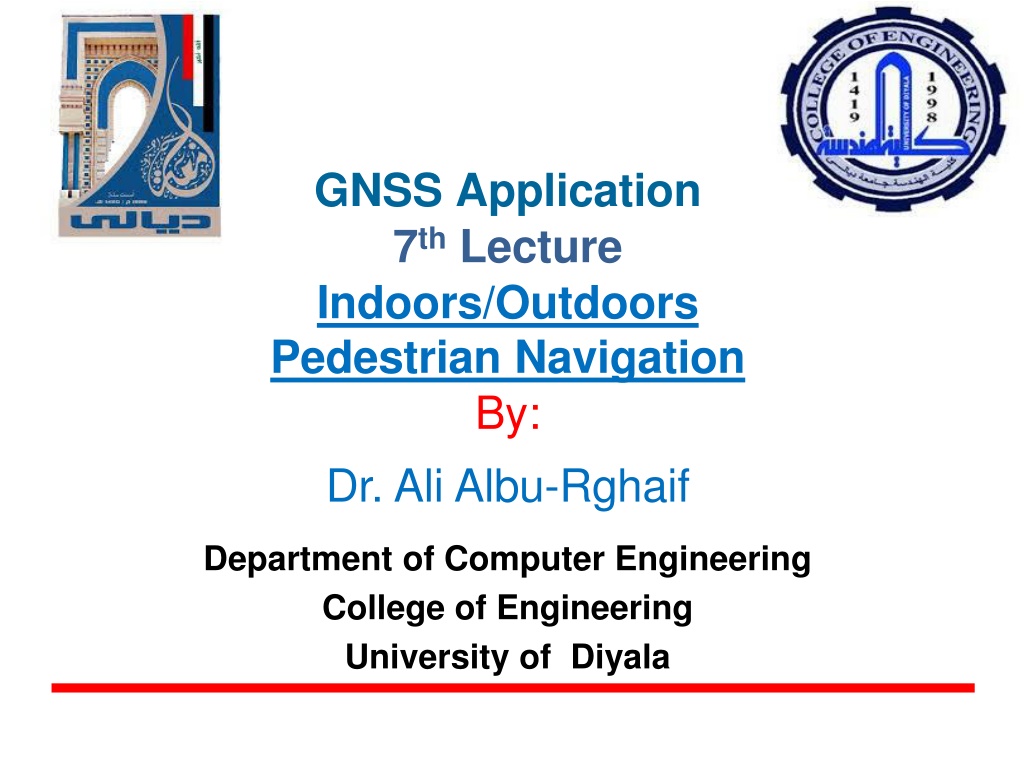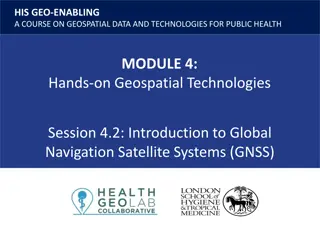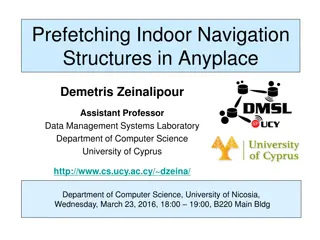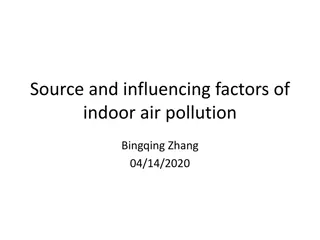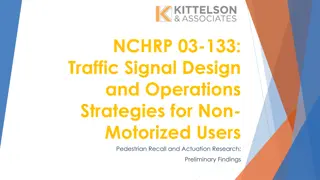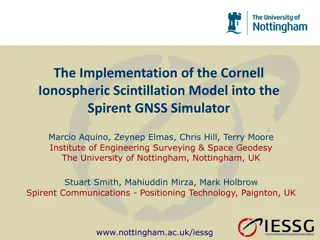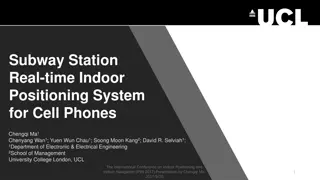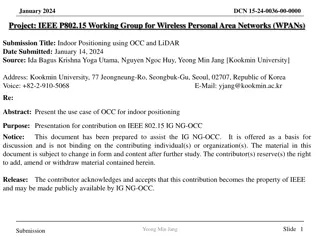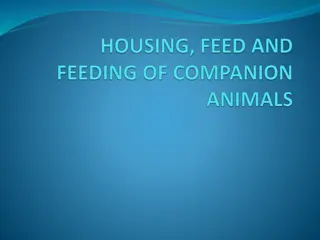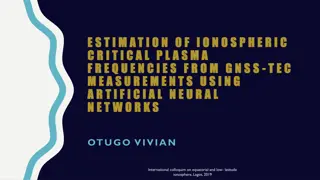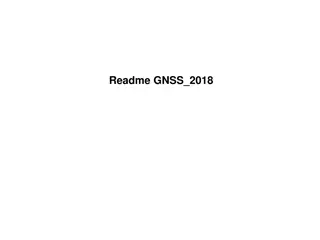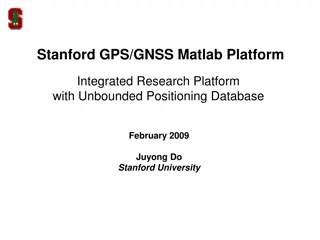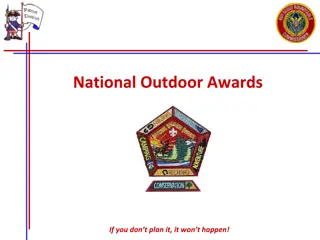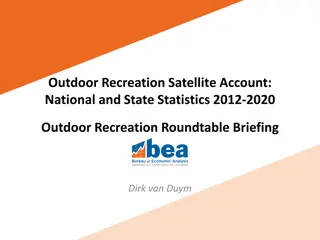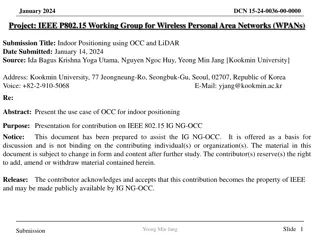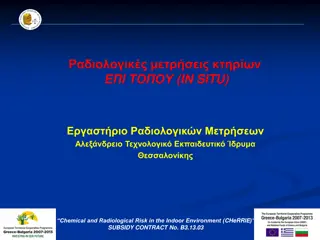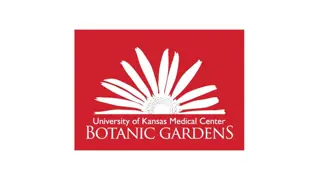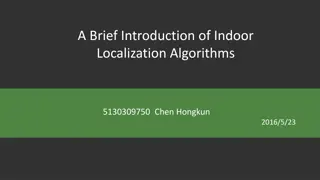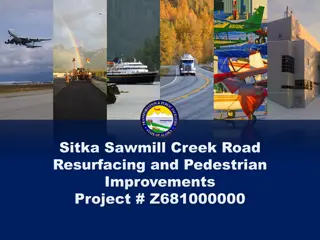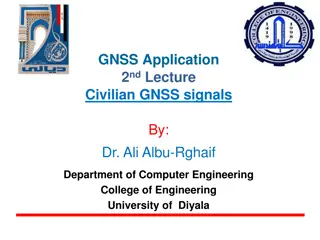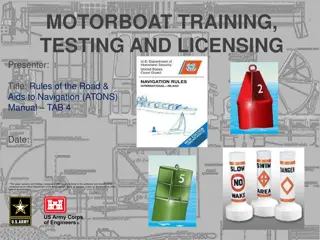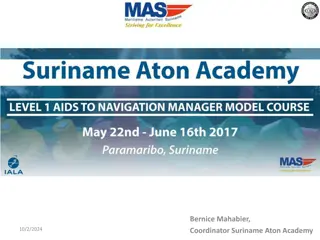GNSS Application in Pedestrian Navigation for Indoor and Outdoor Environments
Communication forms and visual aids play a crucial role in supporting pedestrian wayfinding. Different methods such as maps, floor plans, verbal and textual guidance, images, videos, and 3D presentations are utilized to enhance navigation experiences for users. The use of Location Based Services and TeleCartography II further emphasizes the importance of multimedia features and interactivity in aiding navigation in urban environments.
Download Presentation

Please find below an Image/Link to download the presentation.
The content on the website is provided AS IS for your information and personal use only. It may not be sold, licensed, or shared on other websites without obtaining consent from the author. Download presentation by click this link. If you encounter any issues during the download, it is possible that the publisher has removed the file from their server.
E N D
Presentation Transcript
GNSS Application 7th Lecture Indoors/Outdoors Pedestrian Navigation By: Dr. Ali Albu-Rghaif Department of Computer Engineering College of Engineering University of Diyala
Outline Preparation & Applicability Maps Floor Plans Verbal Guidance Textual Guidance Images Videos 3D Presentation Online Services Preparation & Applicability Summary Additional Design Goals
Preparation & Applicability Many different communication forms are imaginable when supporting pedestrian wayfinding in urban environments. Each of them has advantages and disadvantages that need to be taken into account when combining them. Location Based Services and TeleCartography II
Maps Tests have shown that maps are the most important presentation form when communicating spatial information. Even though maps can differ dramatically from the perceived structure of a spatial environment, they can help the user to get a good overview of the area. Moreover, the map should be available in different scales with different levels of detail. That way the whole route which is demanded by the user can be shown on the display of the device as an overview map without any need to scroll or pan. The moment guidance begins, an automatic zoom can switch to a larger scale with more detail, maybe even including house numbers. Location Based Services and TeleCartography II
Maps Another explicit advantage of maps in comparison to pure textual or oral guiding instructions is the possibility to include multimedia features with the help of interactivity Location Based Services and TeleCartography II
Floor Plans The map-like depiction of different building levels as an adapted floor plan seems to be a good possibility to represent complex indoor structures and so far they have also proven to be the most effective ones. Even though they have similar properties as maps (and are therefore rather easy to read), generalization techniques need to be customized to the specific nature of indoor environments. Overall the generation of floor plans demands a similar expenditure of time as the production of a map. Location Based Services and TeleCartography II
Floor Plans Symbols for Stairs Elevators Escalators Location Based Services and TeleCartography II
Verbal Guidance Concerning the configuration of good route instructions, some guidelines should be followed: Users should be prepared for upcoming decision points. Instructions should be kept simple and clear. Landmarks should be included in descriptions. Street names (or corridor numbers) should be mentioned, but only, if they are usually displayed in the network of the respective city (or building). In case information about the segment is rare, distances can be mentioned. The user should have the possibility to replay the last sentences. Location Based Services and TeleCartography II
Textual Guidance Textual guidance is the most simple presentation form for navigation systems. They are easy to create and do not require a lot of memory. Guidelines for their configuration are very similar to audio guidance. On the other hand, darkness and weather conditions can make it impossible to read written text on a small screen and another main disadvantage of written text is the problem that the user spends more time reading and might not be as attentive to his environment. Recapitulating we can say that both, written and audio instructions, do not demand a lot of technical resources and are therefore easy to implement. Yet in comparison to visual presentations, their main disadvantage is, that they purely concentrate on the communication of the route and do not convey an overview of the whole area. Location Based Services and TeleCartography II
Images An image can be a helpful presentation form in a navigation system, even though it is not really valuable as a navigation aid. Users need a lot of time to compare reality with the photograph which is why it is advisable to merely use them when describing start point, destination or landmarks. Even here it should be ensured, that the depicted object is very distinctive. Furthermore, it should be clarified, that the area does not underlie any seasonal changes before including it in a guiding system. Parks usually have another appearance in winter than in the summertime, markets are sometimes only open at certain months and Christmas decorations could also extremely change the appearance of a place. Location Based Services and TeleCartography II
Videos Videos have similar properties as photographs and their potential as route information aids can be rated as rather low. Objects and streets can be directly compared and identified with reality, but the quick movement of the film often provokes the loss of orientation because it does not give a lot of time to watch everything in detail. Nevertheless, videos can be used as optional information about landmarks and sights. Historic movies may give an insight into what a place looked like in former days, videos of special events that took place at the referred spot, animations or time lapses could inform a tourist about the area. Moreover, they should be kept to a minimum length and size, and data compression should be very high to guarantee the full transmission of the whole movie within a short time, even if transmission rates are rather low. Location Based Services and TeleCartography II
3D Presentation Generally, 3D presentation forms are very effective representations of space. They can give a good overview of our environment and can contain a lot more detail than traditional maps. Especially the visualization of buildings could be made more effective and unambiguous than floor plans. Unfortunately, it is difficult to use them as navigation aids. One of the main disadvantages lies in the large data files and their high requirements on memory space. Location Based Services and TeleCartography II
Online Services Online services that provide the user with additional up-to-date location- based information are desirable. Similar to landmarks, the information could be accessed on the display where an information window pops up to inform the user about special menus of restaurants, upcoming shows in cinemas, availability and prices of tickets or opening hours of shops. This form of online advertisement could become very profitable to businesses the higher the distribution rate of location-based services rises. Moreover, locations of pharmacies that are open at night and timetables of public transport lines could be of use for pedestrians. Equivalent to traffic information in-car navigation systems, pedestrian navigation systems could provide similar services like business disruptions of public transport or construction sites at diverse sights. Location Based Services and TeleCartography II
Preparation & Applicability Summary The basis of a pedestrian the navigation system could either be a map (or respectively a floor plan for indoor environments), pure audio or a pure textual guiding system, in which case additional media is negligible. In case maps are used to visualize the surroundings, it is possible and even desirable to further assist this presentation form with verbal guidance. Too much information could also slow down decision making, which is why either textual or audio instructions should be added as secondary guiding aids. Furthermore, distinctive images at difficult decision points could pop up on the display of the user. With the help of an interactive map additional photographs, videos or online services could be accessible. Location Based Services and TeleCartography II
Additional Design Goals Including cartographic multimedia data in pedestrian, navigation is a major step to increase the user-friendliness of a navigation system. The principles that should be followed when designing a navigation system: Specially support in situations where nature does not provide orientation points or hints. Support both wayfinding styles, the independent and the guided style. Planning of route should be adopted to the respective circumstances. The system must function even if positioning signals are not always available. Public transport should be included in pedestrian navigation systems. Location Based Services and TeleCartography II
Outdoors Navigation Location Based Services and TeleCartography II
Indoors/Outdoors Navigation Location Based Services and TeleCartography II
Dynamic Zoom Location Based Services and TeleCartography II
Reference Location Based Services and TeleCartography II Springer-Verlag Berlin Heidelberg
